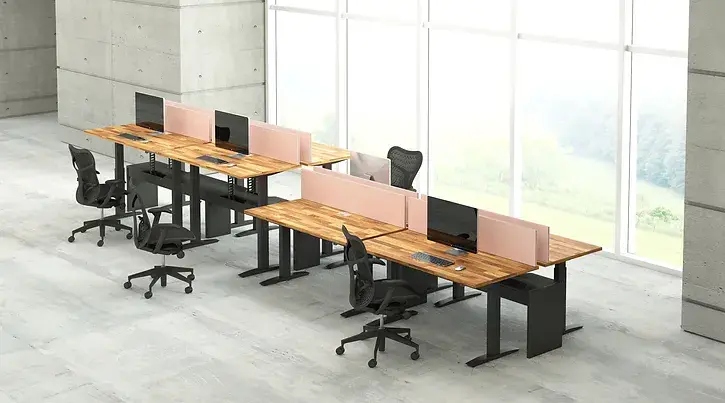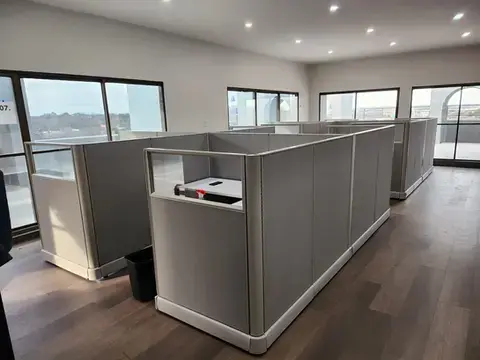Open plan workstations for today's modern workplace
- logicalofficefurni
- Oct 28, 2024
- 2 min read
Updated: Dec 16, 2024
The modern workplace is evolving. Open plan workstations are becoming a staple in today's offices, fostering collaboration and communication.

However, designing an open office layout requires careful consideration. Balancing productivity, privacy, and cost efficiency is key. In this article, we delve into the world of open plan workstations, exploring their benefits, misconceptions, and best practices for design.
The Evolution of Open Plan Workstations
Open plan workstations have a rich history. They emerged as a response to the need for more flexible and collaborative workspaces. Over time, they have evolved to accommodate changing work styles and technological advancements. Today, they are a symbol of modern office design. However, they are not without their challenges. Balancing collaboration with the need for privacy and focus remains a key issue in open office design.
Benefits of Open Plan Workstations in Collaboration
Open plan workstations foster collaboration. They break down physical barriers, allowing for easy communication and idea sharing. This open layout can also contribute to a company's culture. It encourages transparency and team interaction, strengthening workplace relationships. However, it's important to strike a balance. While collaboration is beneficial, employees also need space for focused work. Designing an open office layout that caters to both needs is crucial. It can significantly impact employee productivity and job satisfaction.
Designing for Productivity and Privacy
Designing open plan workstations requires careful planning. It's not just about removing walls and cubicles. The goal is to create a space that enhances productivity. Privacy is a common concern in open offices. To address this, consider incorporating flexible workspaces. These can accommodate different work styles and tasks.
Noise management is another crucial aspect. Effective office acoustics can help maintain a conducive work environment. Remember, a well-designed open office can boost productivity. It can also promote employee well-being and satisfaction.
Integrating Technology with Open Plan Workstations
Technology plays a key role in modern open plan workstations. It can enhance workflow and foster collaboration. Consider integrating tech solutions that support team interaction. This could include shared screens or collaborative software. Remember, technology should complement the open office design. It should not disrupt the balance between collaboration and focus.
Cost Efficiency and Space Optimization
Open plan workstations can be cost-effective. They often require less square footage than traditional offices. Space optimization is another advantage. Open plan layouts can be easily reconfigured to accommodate changing needs.
However, cost and space savings should not compromise employee comfort. Ensure there's enough personal space for each team member.
Addressing Common Misconceptions
Open plan workstations are often seen as noisy and distracting. However, with proper design, noise can be managed effectively. Some believe these workspaces lack privacy. Yet, strategic use of partitions and screens can create semi-private areas.
Lastly, not all open plan offices are the same. Design can be tailored to suit specific team needs and work styles.
Conclusion: The Future of Open Plan Workstations
Open plan workstations are here to stay. They will continue to evolve with changing workplace trends and technology. These workspaces will become more adaptable. They will cater to diverse work styles and the increasing trend of remote work.
In the future, open plan workstations will further enhance collaboration, productivity, and employee well-being. They will remain a key feature of the modern workplace.







Comments